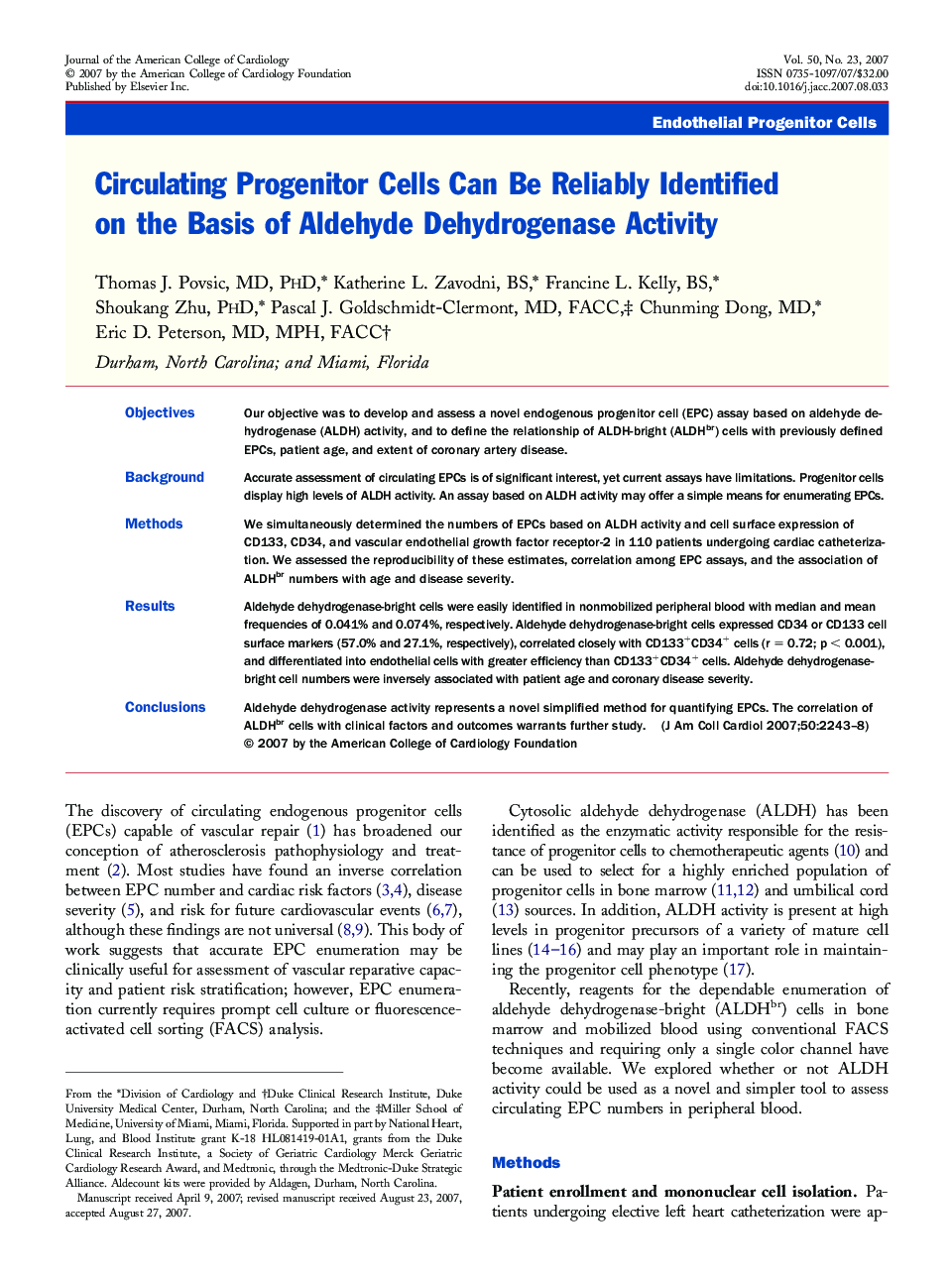| Article ID | Journal | Published Year | Pages | File Type |
|---|---|---|---|---|
| 2950618 | Journal of the American College of Cardiology | 2007 | 6 Pages |
ObjectivesOur objective was to develop and assess a novel endogenous progenitor cell (EPC) assay based on aldehyde dehydrogenase (ALDH) activity, and to define the relationship of ALDH-bright (ALDHbr) cells with previously defined EPCs, patient age, and extent of coronary artery disease.BackgroundAccurate assessment of circulating EPCs is of significant interest, yet current assays have limitations. Progenitor cells display high levels of ALDH activity. An assay based on ALDH activity may offer a simple means for enumerating EPCs.MethodsWe simultaneously determined the numbers of EPCs based on ALDH activity and cell surface expression of CD133, CD34, and vascular endothelial growth factor receptor-2 in 110 patients undergoing cardiac catheterization. We assessed the reproducibility of these estimates, correlation among EPC assays, and the association of ALDHbrnumbers with age and disease severity.ResultsAldehyde dehydrogenase-bright cells were easily identified in nonmobilized peripheral blood with median and mean frequencies of 0.041% and 0.074%, respectively. Aldehyde dehydrogenase-bright cells expressed CD34 or CD133 cell surface markers (57.0% and 27.1%, respectively), correlated closely with CD133+CD34+cells (r = 0.72; p < 0.001), and differentiated into endothelial cells with greater efficiency than CD133+CD34+cells. Aldehyde dehydrogenase-bright cell numbers were inversely associated with patient age and coronary disease severity.ConclusionsAldehyde dehydrogenase activity represents a novel simplified method for quantifying EPCs. The correlation of ALDHbrcells with clinical factors and outcomes warrants further study.
